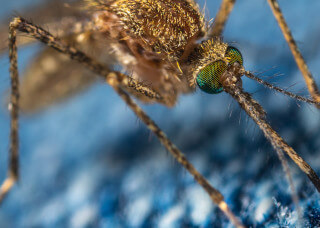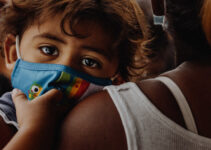What are the environmental effects of C14H9Cl5 or DDT spraying on pollinators? Is there a relationship between pollinators and crop production?
This article explains how an action intended to control malaria has affected other beneficial organisms like pollinators. As a result, crop production suffers.
This article shows that everything is connected to everything else.
Why Spray DDT?
DDT spraying is a common practice in places where vectors of diseases such as Plasmodium, a protozoan carried by malaria mosquitoes are prevalent or are breeding. The pest control method is effective as it kills the pests and makes their eradication in a locality possible. It does not control only malaria but also typhus, body lice, and bubonic plague.
DDT eventually became an excellent agricultural pest agent for crops like sweet potatoes, tomatoes, corn, and other vegetables.
The Molecular Formula of DDT (C14H9Cl5)
As the molecular formula C14H9Cl5 indicates, DDT consists of 14 Carbon, 9 Hydrogen, and 5 Chlorine atoms. It is a commonly-used pesticide for the effective control of pests like mosquitoes. The US Environmental Protection Agency canceled its use in the US because of its harmful health effects. Concern over DDT arose due to its carcinogenicity. It also bioaccumulates through the food chain, thus affect other living organisms like pollinators.
The Role of Pollinators
Pollinators are essential agents of crop productivity in the agroecosystems. They may be large animals that bring pollen from plants that they browsed or visited in their daily feeding activities or small insects like bees that feed on the nectar of flowers, unwittingly bringing along some pollen on its legs from a male flower. In their feeding activity, the female flower of the same species is fertilized, thereby facilitating fruit development.
How Pollinators are Affected by DDT
There were places where pollinators are very few or have been eradicated due to toxic chemicals such as DDT that killed most of them, preventing a viable population from surviving and perform pollination as an ecological function. This event happens in places where undesirable insect species are sprayed with pesticides to eliminate them. Beneficial insects like bees die in the process. Such is the case in areas where malarial mosquitoes are prevalent.

During the 1970s, DDT spraying was common in the malaria-affected communities to eliminate mosquitoes that serve as carriers of the protozoan Plasmodium that causes malaria. It is possible that with this DDT spraying activity, many of those places also got rid of critical pollinating insects. This activity could be the reason why there are very few pollinators in areas where DDT spraying occurred. The effects of DDT spraying appeared to have persisted even to the present day.
Beekeeping as Remedy to the Lack of Pollinators
The problem brought about by DDT spraying finds hope in training the community members to engage in beekeeping. Beekeeping can be considered a long-term solution to the harmful effects of DDT spraying since bees do not leave their home colonies, so the propagation of their population is possible.
However, the cultured bees appear to suffer the same fate as those other pollinators affected by DDT spraying. This time, farmers spray insecticides to keep harmful insects from destroying their flowering plants, unwittingly killing the visiting bees. The pesticides somehow got to the nectar and intoxicated the bees feeding on the flowers.
Alternatives to DDT
At this point, you may be thinking about alternatives to DDT as, although it is effective, its use can have long-term impacts as its presence persists through time. There are natural, non-toxic sprays that can control mosquitoes in your homes. Here are alternatives that are environment-friendly.
- Garlic. Just prepare a mix of a few cloves of garlic and water. Just boil the garlic in water, and you’re done. Put the garlic extract into a spray bottle.
- Coffee grounds. You can suffocate the mosquito eggs and larva by evenly spreading coffee ground on stagnant water.
- Mint and basil leaves. Aside from using these popular spices in cooking, the leaves of mint and basil repel mosquitoes. Mosquitoes dislike the smell of these plants.
- Beer and alcohol. Mosquitoes dislike the smell of beer and alcohol. Just don’t drink the beer.
These alternatives, however, are not persistent just like DDT. But they sure can spare you from the harmful effects of the pesticide.
Reference
National Pesticide Information Center (2000). Technical Fact Sheet
© P. A. Regoniel 17 May 2021



